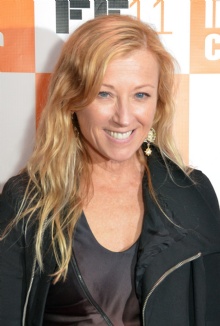Premise
Dorine Douglas is an unassuming, socially withdrawn copy editor at a struggling glossy magazine, a place of stale coffee, fluorescent glare, and passive-aggressive memos. As new management imposes cost-cutting and telecommuting, Dorine’s tenuous sense of belonging evaporates. One after-hours mishap, an accidental electrocution while she and a colleague fuss with a faulty computer cord, becomes the hinge of her transformation. Instead of calling for help, Dorine tidies the scene, takes the body home, and quietly installs her new “coworker” in the basement. From that moment, her need to preserve an office community turns murderous.
Plot
The magazine’s consolidation gives Dorine both motive and cover. She is ordered to work from home, her access to the newsroom’s hum replaced by a flickering monitor and a bedridden mother upstairs. She begins to manipulate the workflow, misdirected emails, mysteriously broken connections, memos that arrive just late enough to sow distrust, nudging office politics toward paranoia. When people get too curious about the first death or too callous about pushing her out, they meet accidents that look like misfortune but carry Dorine’s careful fingerprint.
Bodies accumulate, and Dorine arranges them into a parody of the office she feels has abandoned her. A banker’s lamp glows over a makeshift desk, a stapler sits ready, and a dead man’s tie is straightened for the next shift in a workplace only she can see. The murders span types: a predatory colleague who treats her as invisible; a well-meaning subordinate whose kindness threatens exposure; a middle manager who prides himself on efficiency. Each killing is at once practical, another witness silenced, and devotional, another “employee” seated for company.
As management touts the efficiencies of remote labor and the glossy promise of a digital future, mistrust curdles among the survivors. An ambitious young editor begins to piece together the pattern behind the glitches and disappearances, her suspicion narrowing on the quiet woman who never seems to leave her desk. Dorine counters with forged notes and doctored messages, pitting rivals against each other while she tightens the net.
Home and History
Dorine’s house mirrors her mind. Upstairs, her demanding, incapacitated mother embodies the past’s suffocating pull; in the hallway, mementos suggest a father’s absence and a childhood that curdled into arrested time. Downstairs, the basement blooms into a grotesque sanctuary where the office lives on exactly as Dorine wants it: orderly, loyal, mute. She writes and rewrites connections that the real world keeps severing, animating the dead with small acts of secretarial care.
Climax
The confrontation arrives when the editor who has been tracking the anomalies follows them to Dorine’s door. What begins as a welfare check becomes a descent into the basement’s fluorescent nightmare, where Dorine’s fantasy office is revealed in full. A struggle erupts among filing cabinets and extension cords; alarms blare; flames or falling debris threaten to erase the evidence. In the chaos, Dorine slips the noose, leaving behind a tableau of corporate carnage.
Aftermath and Tone
Reports of fatalities, rumors of sabotage, and a gutted publication leave survivors shell-shocked, but the machine of work grinds on. Somewhere else, in a rented room washed in blue light, a woman with Dorine’s posture settles at a new keyboard under a different name, smiling faintly as a welcome screen loads.
The screenplay plays black comedy against slasher chills, skewering mid-90s workplace culture, downsizing, telecommuting, buzzwords about synergy, while tracing how isolation and neglect metastasize into violence. With its fluorescent palette, still-life compositions, and mordant humor, it treats the office as both a haunted house and a death drive, and Dorine as its most devoted employee.
Office Killer
A feature film written and directed by Cindy Sherman, a darkly comic thriller about an office worker who becomes a serial killer; the film extends Sherman's interest in constructed identities into narrative cinema.
Author: Cindy Sherman
 Cindy Sherman's biography and quotes, detailing her groundbreaking photography, artistic development, and influential exhibitions.
Cindy Sherman's biography and quotes, detailing her groundbreaking photography, artistic development, and influential exhibitions.
More about Cindy Sherman
 Cindy Sherman's biography and quotes, detailing her groundbreaking photography, artistic development, and influential exhibitions.
Cindy Sherman's biography and quotes, detailing her groundbreaking photography, artistic development, and influential exhibitions.